Bass-Ackwards – Sea Basses of all Stripes (Sustainable Seafood #14)
A bass is just a bass, unless it isn't a bass at all
Along with cod and snapper, bass is probably one of the most misused names for fish. Many types of fish are called bass, but most of them are not related to each other. On the US east coast, the most common sea bass is the Striped Bass, sometimes known as rockfish (but not to be confused with Pacific Rockfish). The European sea bass, known as Branzino, Bar, or Loup de Mer, is closely related to it. Not related, but similar in flavor and texture is the Barramundi, a giant perch from the South Pacific region. Then there is the California or White Sea Bass, which is, surprise, also not a bass. (I am excluding from this list the Black Sea Bass and Chilean Sea Bass, both of which are also not true bass and will be covered in later chapters).
Striped Bass - The most controversial fish on the East Coast
Striped bass Morone saxatilis (or stripers, as they are known) range from Canada to Florida and the Gulf of Mexico, though highest abundance occurs from Maine to North Carolina. They have been introduced to lakes and reservoirs, as well as San Francisco Bay.
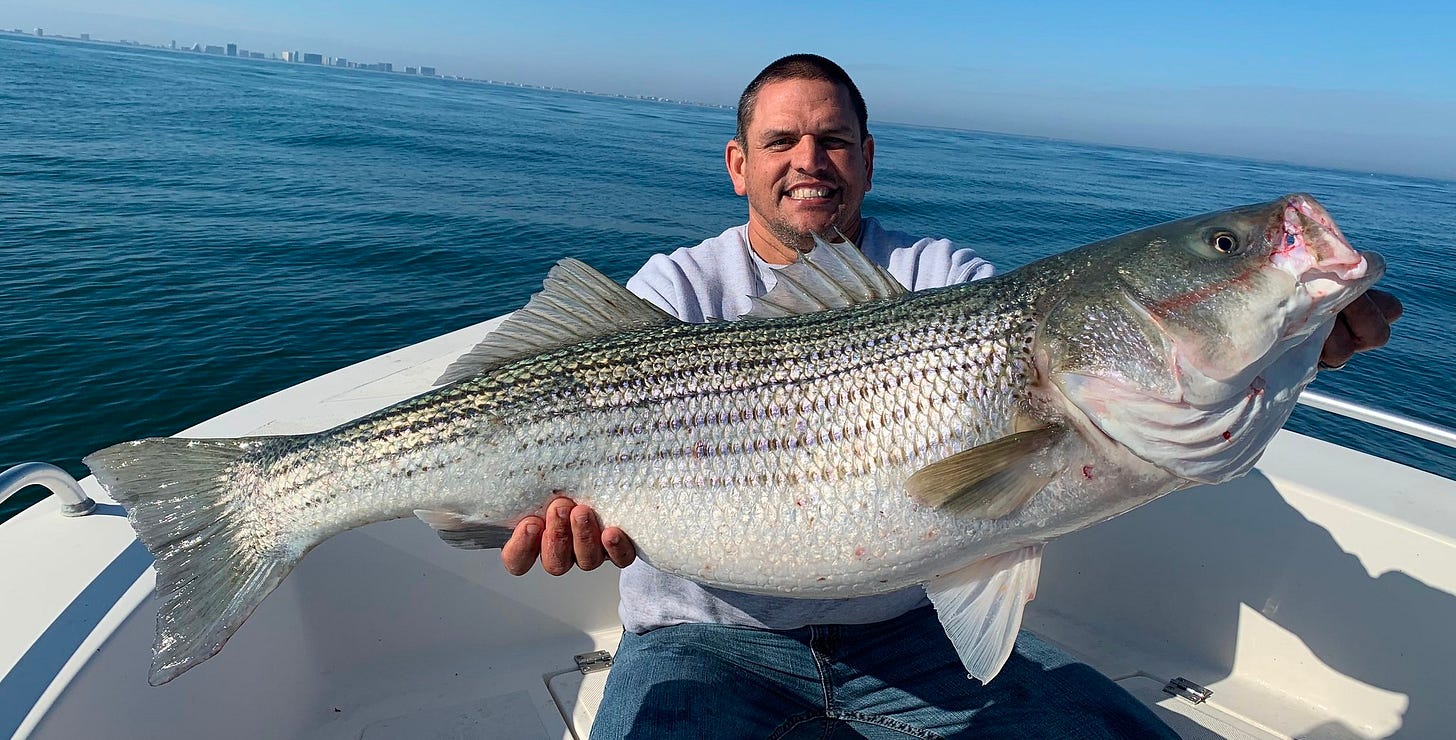
FAQs: Striped bass is considered the Maryland State Fish. They are silver with six or seven black stripes along the body. They have two dorsal fins, one of which is spinous. They can live up to thirty years, grow to over one hundred pounds, and reach sixty inches in length. The largest one caught in Maryland weighed 68 pounds. Females mature at about 4 years of age, whereas males mature at 2 years.
Striped bass are Semi-anadromous and are highly migratory. Most go to sea as juveniles. In the spring, adults return to estuaries to spawn, where they may stay for 2 to 4 years. They eat a variety of foods including plankton and small fish, especially menhaden and anchovies. They are preyed on by sharks, seals, and osprey.
Eighty percent of the coastal stock of striped bass originate from spawning populations in Chesapeake Bay. The remainder spawn in Delaware Bay and the Hudson River. In the summer, they migrate north along the coast and move into estuaries for spawning. In the fall, they migrate southward and spend the winter along the coast. Fish tagged in Maryland have been found as far north as Canada.
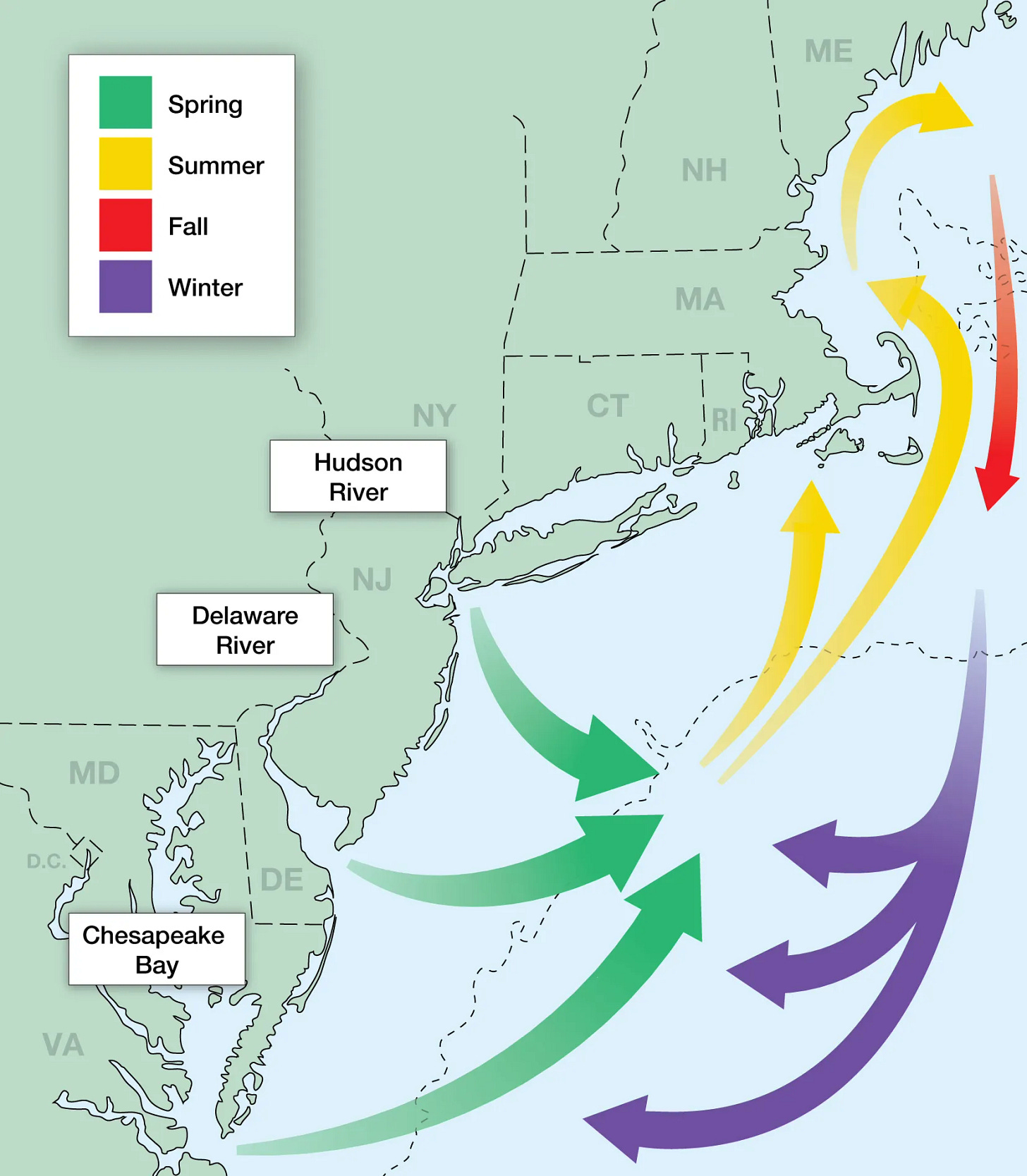
Fishery: The fishery is managed by the Atlantic States Marine Fisheries Commission. Federal waters (beyond 3 miles from the coast) are closed to fishing. Landings by recreational fishermen totaled 36 Million pounds in 2022, ten times more than commercial landings of 3.8 million lbs. Recreational fish are caught by hook-and-line, whereas commercial fish are caught in pound nets and gillnets. In Maryland, the recreational fishery is open from May through December, with a short closure in the last half of July. A slot-size limit has been imposed to ensure survival of juveniles and adult spawners, so only fish between 19 and 24 inches can be retained. It is not uncommon for fishers to land fish weighing 30 to 50 lbs. When hooked, the fish fight as well as a salmon, which makes them a highly prized catch. Because of the slot limit, up to 90% of recreational fish are released, of which about 9% die. Many fish are caught by pound nets, which are nets set out from the shoreline; migrating fish hit the net, then move along it into a trap-like enclosure at one end.
Sustainability: Striped bass populations have undergone large historical fluctuations. The population declined dramatically in the late 1970s. Conservation measures and blame were hotly debated between recreational and commercial fishers. A complete moratorium on fishing occurred from 1985 to 1989, which allowed populations to recover by 1995. Fish were abundant until 2010, when they started to decline again. A strong year-class of juveniles was recorded in 2015, which led to high catches of adults in 2022. But surveys in 2023 and 2024 showed extremely low abundance of juveniles, so further reductions in catches are expected in 2025 through 2026.
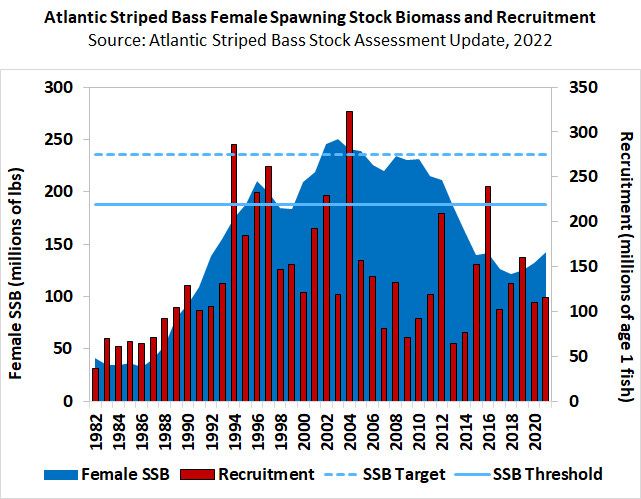
Despite measures to reduce catches, it is likely that climate change has played a role in striped bass population fluctuations. Low precipitation and warmer water due to ocean warming has probably reduced returns of striped bass to Chesapeake Bay as well as their spawning ability. The abundance of menhaden, one of their primary prey items, has been stable along the US east coast, but the portion of their population inside Chesapeake Bay, where striped bass spend most of their spawning season, may have declined, either due to fishing or climate change. Some rockfish are raised in indoor aquaculture facilities, but most fish on the market are caught from wild populations.
Product: In the seafood market, striped bass may be sold as whole fish, fillets, or sections. They have a mild, sweet flavor and firm, flaky texture.
SeaFood Watch: Sustainability of striped bass populations has been assessed by Seafood Watch (SFW), as follows:
Best Choice: Farmed indoor (6.9)
Good Alternative: Handlines (2.7)
Avoid: Pound net (1.7)
If you see “rockfish” in a restaurant in Maryland or Virginia, it is probably wild-caught, and you would have no way to know how it was caught, but most likely, it came from a pound net.
Nutrition: Stiped bass are an extremely healthy seafood choice. They are full of lean protein, and are low in fat and calories. They are an excellent source of vitamin B12, selenium, and phosphorus.
SPI: I love Chesapeake Bay striped bass (known locally as rockfish). It is tender and sweet, and one of my favorite local fish. I give it a rating of 4.5.
European Sea Bass
The European Sea Bass Dicentrarchus labrax is also known as Branzino, Bar, or Loup de Mer. They are very close relatives of Striped Bass, belonging to the same family (Moronidae). Branzino are commonly found in Western Europe, the Mediterranean Sea, and around the coast of North Africa. Branzino is one of the most successfully cultivated fish in the world (after Tilapia and carp). Adult fish are held in captivity and given hormones that cause them to spawn, after which the eggs and juveniles are raised in tanks to harvestable size. Wild-caught fish only account for about 10,000 tons, but over 100,000 tons are produced by aquaculture. Branzino have a delicate flavor and texture that is very similar to Striped Bass.
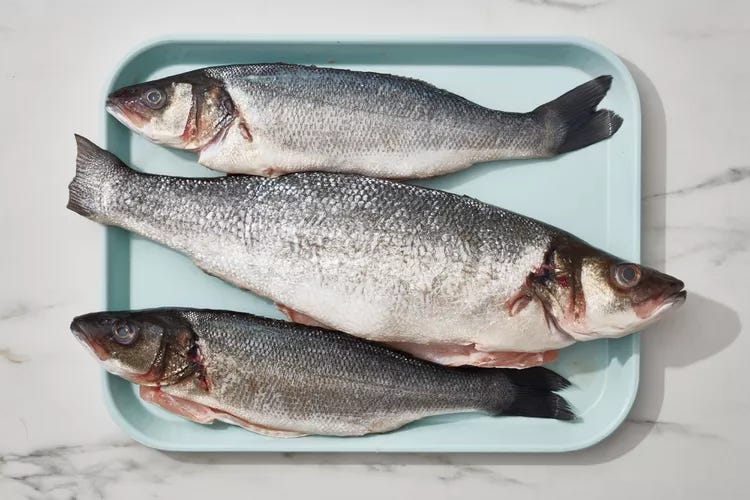
California Sea Bass
Diners in California might come across White Sea Bass Atractoscion nobilis, also known as Seatrout or White Weakfish. White Sea Bass is not actually a type of bass. It is a member of the family Sciaenidae, which includes the croakers and drums, and can make croaking sounds. Average size is about 20 pounds and 3 feet in length, but they can reach 90 pounds and five feet. They range from Baja California, Mexico to San Francisco. White sea bass mature at about 6 years of age and can live to 28 years. They eat mackerel, anchovies, and other fish, and because of their size, have few predators besides sharks and sea lions. They are highly prized recreational fish, but the commercial fishery is only about 1 million pounds. Almost 75% of the white sea bass sold in the US are imported from Mexico. Most are caught using drift gillnets, and some by hook and line. White seabass has a firm, meaty texture, with thick, white flakes. It is very low in fat and has a mild flavor.
Barramundi Down Under
Barramundi, Lates calcarifer, are also referred to as Asian Sea Bass or Giant Perch. Technically, they are not a bass but belong to the Perch family. They are native to tropical waters around southeast Asia and northern Australia. Barramundi are catadromous, i.e. they live in fresh or brackish waters as adults and migrate downstream to estuaries to spawn. Larvae and juveniles develop in estuaries then migrate upstream towards freshwater as adults. Barramundi are protandrous hermaphrodites; they develop first (prot-) as males (androus), and after a year or two undergo sex reversal to become females. Females can produce over two million eggs per kg of body weight. They can reach 60 inches in length and 60 kg weight (132 lbs), and live up to 35 years. The wild fishery produces about 50,000 tons/year, but aquaculture now produces three times as many, over 150,000 tons/year. Most fish on the market come from Australia, Malaysia, Thailand, and the Philippines. They have moderate oil content and light, white, flaky flesh. Their flavor is very similar to striped bass or branzino. I recently ate Barramundi in a restaurant near Washington, DC, after learning from the chef that it was wild-caught, and it was tender and delicious. I give it an SPI rating of 4.
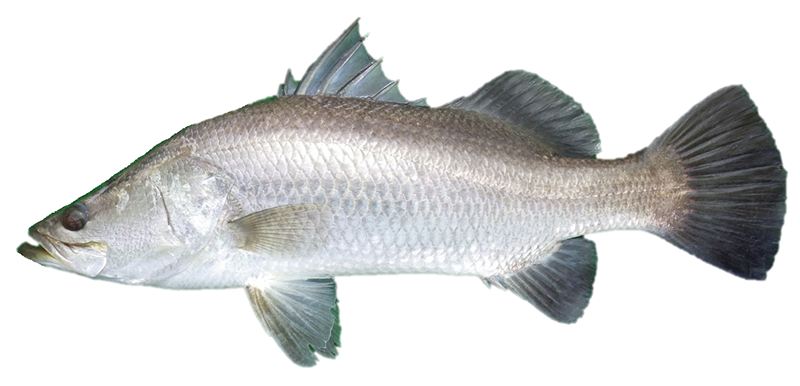
To Bass or Not to Bass
Sea bass (and their look-alikes) are some of the best tasting and nutritious fish in the ocean. Whether you choose to eat rockfish (striped bass), branzino (European sea bass), white sea bass, or barramundi (Asian sea bass), you will have a delicious meal of tender, white, flaky fish that goes well with many sauces and condiments. Many of these are still caught wild and considered local delicacies, but some are becoming widely available as aquaculture products. I highly recommend them as one of the best seafood dining experiences available.
As usual, Bon Apetit! Itadakimasu!
Writing about nature is not easy. It requires preparation, hard work, and sometimes sweat to observe nature, and time, thought, and effort to describe it. Not to mention test-eating all those seafood dinners. Although this post is free, becoming a paid subscriber will help me continue to share my thoughts, and encourage future postings.
This issue of Ecologist at Large is available to all readers. However, if you would like to support my work with a one-off contribution, click “Buy me a coffee” below.




